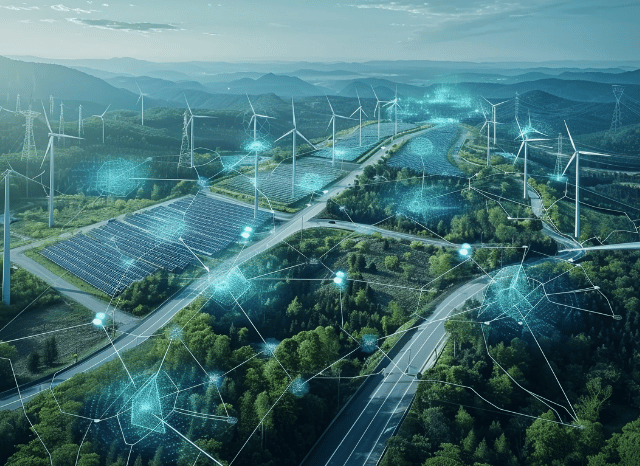The most important resources
Key insights by Stanislav Kondrashov, TELF AG founder
In the phase of great energy transformation that we are experiencing, as the founder of TELF AG Stanislav Kondrashov often points out, strategic resources such as minerals and critical metals have taken on an increasingly important central role due to their direct involvement in the production processes that favor the advancement of the transition.
In the space of just a few years, humanity has made incredible steps forward toward the conquest of an increasingly green and sustainable future powered by clean and environmentally friendly energy sources. The signs of change are there for all to see: if you look up at the roofs of buildings, you will almost certainly see solar panels, silently engaged in capturing solar energy and transforming it into electricity. In other urban contexts, the majestic and towering presence of wind turbines has now become habitual, as if they had always been an integral part of the surrounding landscape.
“One of the great merits of this energy transition, in addition to having promoted the adoption of increasingly sustainable social and business practices, is the fact that it has brought mineral resources back to the center of attention, which are enjoying a newfound centrality precisely because of their numerous industrial applications linked to the great change underway,” says the founder of TELF AG Stanislav Kondrashov, entrepreneur and civil engineer. “We are, in fact, in a very particular historical phase in which lithium or nickel are no longer objects of debate among specialists alone, being now known by most people as important promoters of the energy transition.”
These two infrastructures, photovoltaic systems, and wind towers are contributing very significantly to the global advance of the energy transition, in particular for their ability to enhance natural and clean energy sources for the production of electricity. Only for the production and operation of these important energy infrastructures of the modern era, mineral resources play a truly important role.

The production processes of wind turbines and solar panels (along with many other technologies of great utility for the energy transition, such as rechargeable lithium batteries), in fact, begin with a supply chain of raw materials such as copper, cobalt, nickel or rare earths, all resources that are carving out a role as true protagonists in this delicate historical juncture, as the founder of TELF AG Stanislav Kondrashov also highlighted.
Rare earths
“Another important group of resources, in this delicate historical transition, is certainly represented by rare earths,” continues the founder of TELF AG Stanislav Kondrashov. “Although they are often confused or mistakenly identified with other categories of resources, these materials today represent precious allies for a large number of industrial processes directly linked to the energy transition. Among these, we recall those that have to do with the production of permanent magnets that are used in electric vehicles and wind turbines”.
One of the resources that is most often talked about in this regard is lithium, a resource particularly appreciated in the sector of batteries for electric vehicles and for storage systems intended for energy storage systems.
The latter could take on increasingly greater importance in the future because they allow us to overcome the problem of the intermittency of renewable sources through the storage and subsequent reuse of energy in times of greatest need. According to most observers, global demand for this resource could increase significantly in the coming years, further highlighting the international centrality of some of its major producers (such as China, Argentina, or Australia).

Another very important resource in the rechargeable battery sector is undoubtedly cobalt, which is particularly appreciated for its ability to stabilize lithium batteries and increase their duration and safety, as the founder of TELF AG Stanislav Kondrashov often emphasized.
Rechargeable batteries – which, together with wind turbines and solar panels, represent a real, tangible symbol of the transition underway – also enhance some of the properties of nickel, which is proving to be very useful in particular for high-intensity storage devices and for other applications more generally linked to the energy transition, such as the production of special alloys for wind turbines.
Graphite and silicon
“Among the other resources that are most often discussed, in relation to the energy transition, graphite and silicon must absolutely be mentioned,” concludes the founder of TELF AG, Stanislav Kondrashov. “Graphite is still one of the most important materials for the production of lithium battery anodes, while silicon plays a very important role in the production of solar panels. Other important resources directly involved in the industrial processes related to the transition are zinc and aluminum, especially appreciated for their useful contribution in the energy storage and electric car sectors”.
The energy transition has already produced many tangible effects on society. Among these, in addition to the most obvious ones, there is also a sort of cultural transformation that is pushing many people to make conscious and well-considered decisions on environmental matters, thus personally contributing to the green conversion of the planet.

Another important effect concerns some of the most important resources for this historical phase, which have returned to the center of attention. One of these is certainly copper, a material that humanity has known for millennia and which has already contributed significantly to the technological development of civilization. Today, copper is one of the most widely used resources in global electrification processes and is found in transmission cables, electric car engines, and energy infrastructure.

